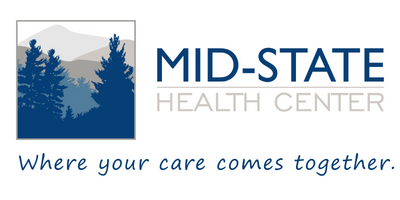Health insurance can be confusing!
Even though millions of Americans have gained health insurance coverage in recent years, many do not know how to use the coverage or understand the basic terms related to their insurance.
A survey by the American Institutes of Research found “about three out of four Americans ages 22-64 believe they know how to use health insurance but only about one in five can correctly calculate how much they owe for a routine doctor visit.”
Health care facilities across the nation, such as community health centers like Mid-State, aim to provide information related to important health information. To help better understand health insurance terminology, the following definitions are provided by the U.S. Centers for Medicare & Medicaid:
Premium—The cost of your insurance plan. Payments are made monthly, quarterly, or yearly by you or your employer, most commonly both.
Deductible—The out-of-pocket amount you pay for covered healthcare services before your insurance plan starts to pay. For example, if your deductible is $500, your insurance will not pay for anything until your costs are more than $500. This is in addition to your premium.
Coinsurance— The percentage of cost of a covered health care service you pay (20%, for example) after you’ve paid your deductible.
Let’s say an office visit is $100 and your coinsurance is 20%. If you’ve paid your deductible: You pay 20% of $100, or $20. The insurance company pays the reaming $80. If you haven’t met your deductible: You pay the full allowed amount, $100.
Copayment—A fixed amount you pay every time you receive a particular health service. For instance, if your copayment to see a healthcare provider is $25, you pay that amount each time you see them after you’ve met your deductible. Insurance takes care of the rest. Copayments can vary for different services, such as drugs, lab tests, or specialty visits.
Out-of-Pocket Maximum/Limit—The most you pay during a policy period (usually a year) before your health insurance or plan begins to pay 100 percent. This usually includes your on deductible, copayments, and coinsurance. This limit does not include your balance-billed charges, premium, or healthcare services your plan does not cover. Some plans do not count the out-of-network payments, co-insurance payments, co-payments, other expenses or deductibles toward this limit.
In- and out-of-network—An in-network provider is a healthcare office that has contracted with the health insurance company to provide services for people on that insurance plan. An out-of-network provider is someone who does not have such a relationship with the insurance company. In many cases, insurance will not pay for out-of-network services, or not pay as well.
Claim—The bill you or your healthcare provider submits to your health insurance company when you get items or services you think are covered.
Pre-authorization—A decision by your health insurer or plan that a healthcare service, treatment plan, prescription drug, or durable medical equipment is medically necessary. This is often necessary before a service is performed. Your health insurance may require preauthorization for certain services before you can receive them, except in an emergency.
Referral – A written order from your primary care doctor for you to see a specialist or get certain medical services.
